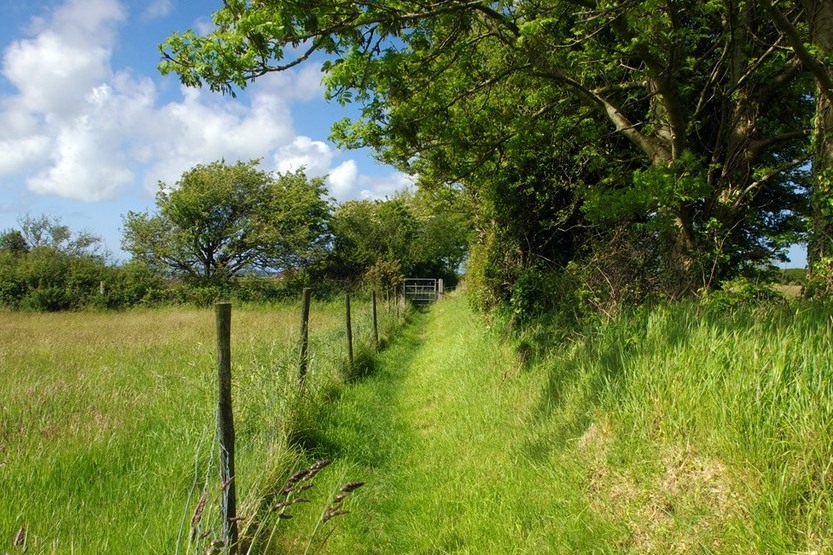
Pembrokeshire footpath
Get to know your local footpaths!
If you live in England or Wales, then unless you live in the middle of a large town, you're probably within walking distance of the public rights-of-way network, which provide traffic-free access to the great British countryside. If you're not familiar with the footpaths in your local area, Ordnance Survey maps are a good source of information, but can be years out of date, so it's best to consult the definitve map. Copies of this should be available at your local council offices and libraries. Many websites use OS maps, so you can check your local area from these. If you're planning to walk in any area frequently, you'll need the Ordnance Survey 1:25000 Pathfinder maps.
Types of rights-of-way
There are four types of a right of way. The most common are public footpaths, usually waymarked with yellow arrows. These indicate a right-of-way on foot only. Next are public bridleways - usually waymarked with blue arrows, which additionally indicate a right of way on horeseback or on a pedal cycle. Next up are restricted byways, which additionally allow passage in a horse-drawn vehicle. There are few of these around, but they're waymarked with purple arrows. Finally there are byways which allow passage in a vehicle. These are marked with red arrows.
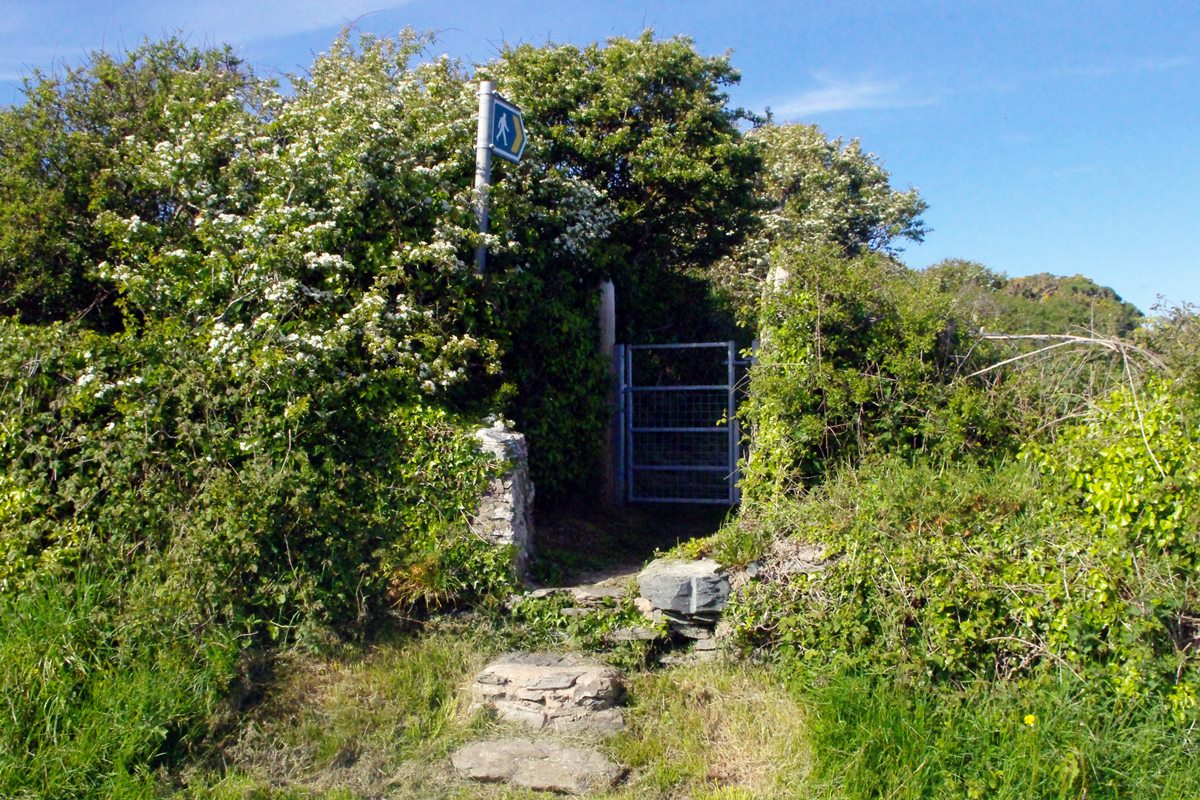
Footpath on Anglesey
Where you can go and what you can do
A public right-of-way is a public highway. You may use it as often as you like, at any time of day or night, for the purposes of getting from one place to another, but not for purposes such as annoying the landowner or spying on his activities. You may stop briefly to take refreshment or rest, but this does not mean you can indulge in a picnic on someone else's land. A landowner cannot stop you from using rights-of-way across his land. Although this is very unlikely in most parts of Britain, it can happen in rural areas where some paths are rarely used. Should you encounter a landowner obstructing your way, firstly explain to him that you're on a public footpath - if possible show him the map you're probably using. If he claims there's no footpath, I would advise giving him the benefit of the doubt - for now - until you can check up. During office hours you could do this by phoning your local rights-of-way department. Otherwise you may need to consult the definitve map. If it's on that map, you may use that route - no matter what any landowner tells you. If you're certain you're on a footpath and he's not blocking your way simply continue your walk. If he is blocking you, I'd recommend playing the waiting game. Chances are he'll have better things to do than stand in your way, so I would suggest you just wait until he moves.
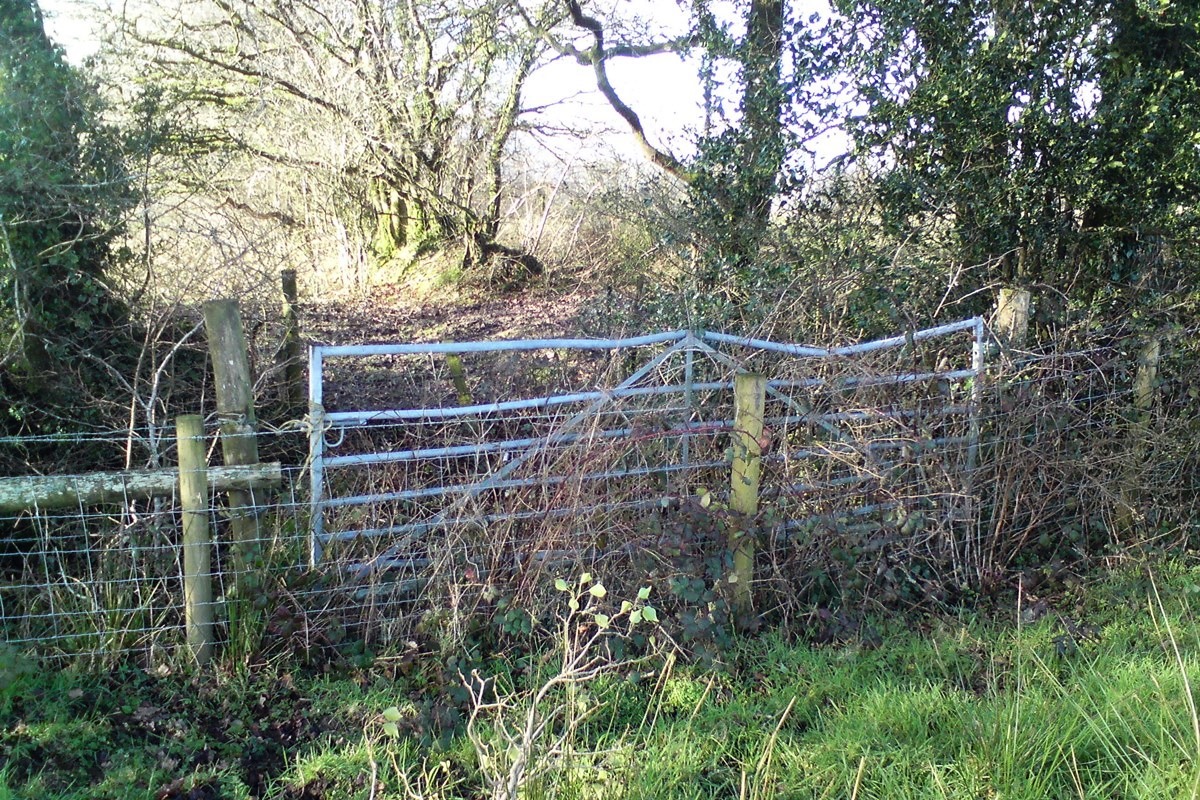
Obstructed Byway, Cwmffrwd, Carmarthenshire
Obstructions
Obstructions can take many forms, from dense overgrowth to cropping over footpaths and fences across paths. If you encounter an obstruction, you may divert around it providing this does not take you onto someone else's land. You are also legally allowed to remove sufficient of an obstruction in order to pass, providing you keep any damage
to a minimum. Strictly speaking, this means you can cut a fence across a public footpath, but only do this if you can't easily get past, and you're absolutely certain you're on the exact line of the path. If a path has been cropped over, it's best to stick to the line of the path across the field, even if this means walking over the crop. Farmers should make good any rights-of-way across their fields. All obstructions and problems should be reported to your local council.
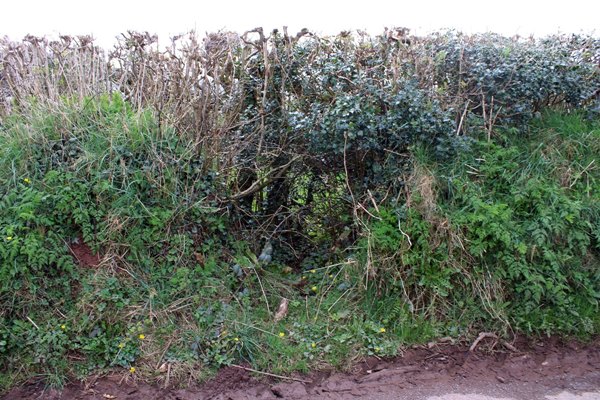
A dropped hedgebank is a good indication of a footpath
Finding the way
In some parts of Britain, particularly around London and south-eastern England, rights-of-way are well-marked, with waymarking arrows showing you the way and "Public Footpath" signs where paths leave the metalled road, but unfortunately it's not always like this. For many paths you'll need a map of at least 1:25000 scale in order to find the route. Most paths are signposted where they leave the metalled road, but little-used ones can be really difficult to locate. Most will have been regularly used at some point in time, so you need to look for clues. An overgrown stile or a drop in the line of the hedge are good indicators of the start of a public footpath.
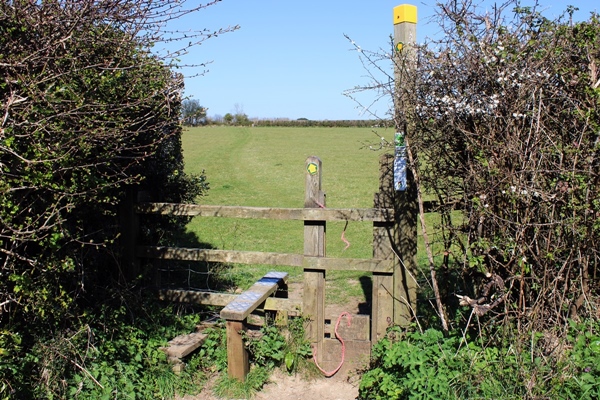
Devon footpath
Help keep paths usable
Try to help keep your local paths in a usable condition - especially in the summer when vegetation can quickly become a problem. Carrying a stick to thrash any nettles or brambles, or a pair of secateurs to trim vegetation around stiles or gates will help keep the route usable for others. Some local councils have an Adopt-a-Path scheme, whereby local people can "adopt" some of their local rights-of-way, and keep them usable by trimming vegetation, waymarking and reporting any problems. Ask your council if they do such a scheme.
 Pembrokeshire footpath
Pembrokeshire footpath
 Footpath on Anglesey
Footpath on Anglesey Obstructed Byway, Cwmffrwd, Carmarthenshire
Obstructed Byway, Cwmffrwd, Carmarthenshire A dropped hedgebank is a good indication of a footpath
A dropped hedgebank is a good indication of a footpath Devon footpath
Devon footpath